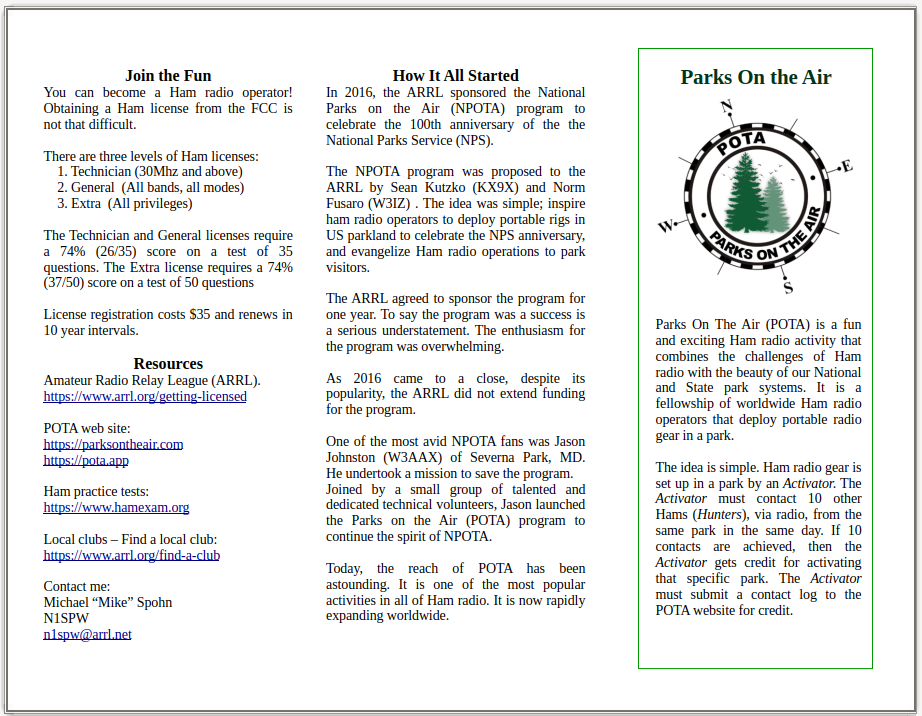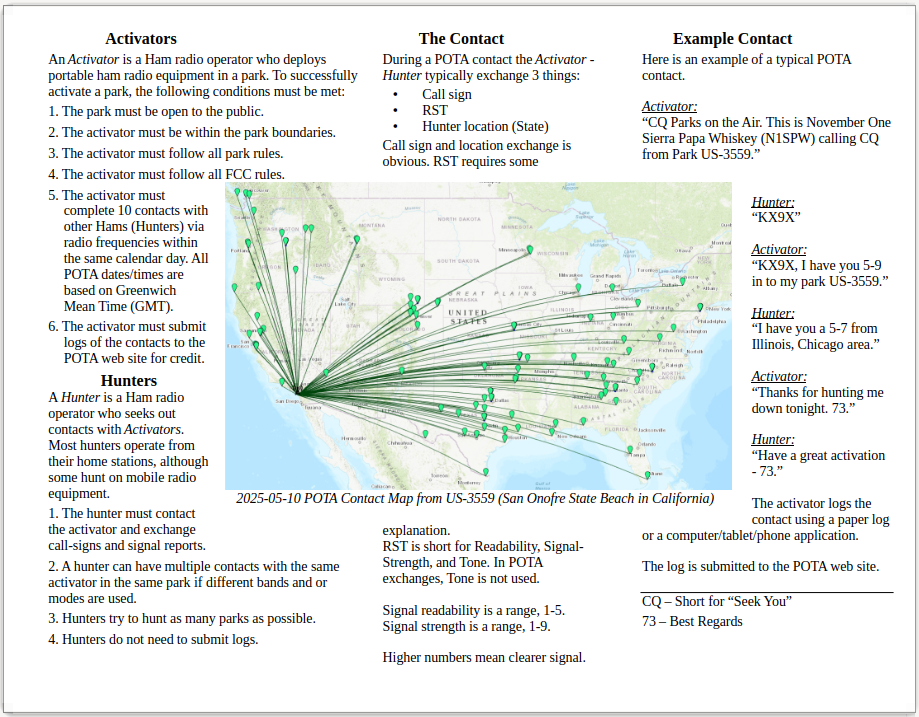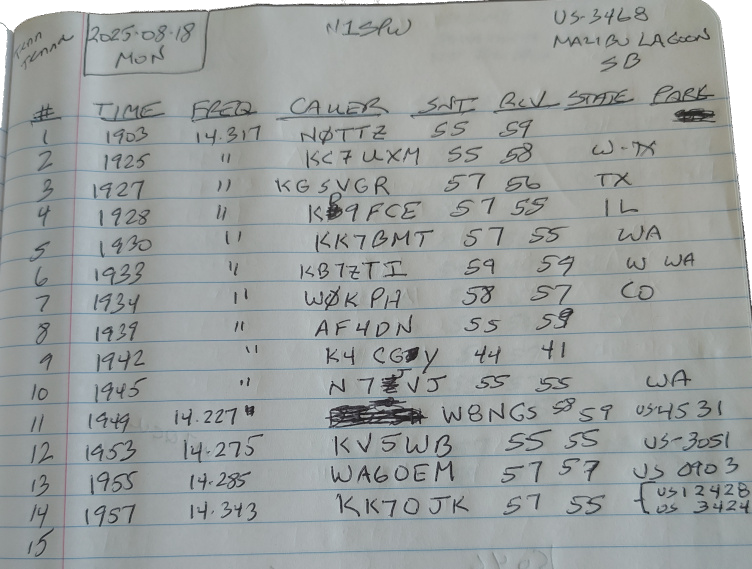I spend a lot of time in parks. Some of them are very crowded.
It is very hard for the public to resist asking, “What is that very long wire hanging from that very long pole attached to your truck?”
As often as I can, I pause my POTA activation long enough to answer their questions and tell them about Ham radio and POTA. Quite often, I give out a QSL card with my name and phone number in case they have follow-up questions.
I finally got around to writing a POTA brochure to hand out in the field. It is a tri-fold that is easy to transport and store in my power box.


You can download a copy here if you want to explore the layout.
Leave a comment if you would like me to Email you the document template so you can create your own.
POTA On!
73,
N1SPW


